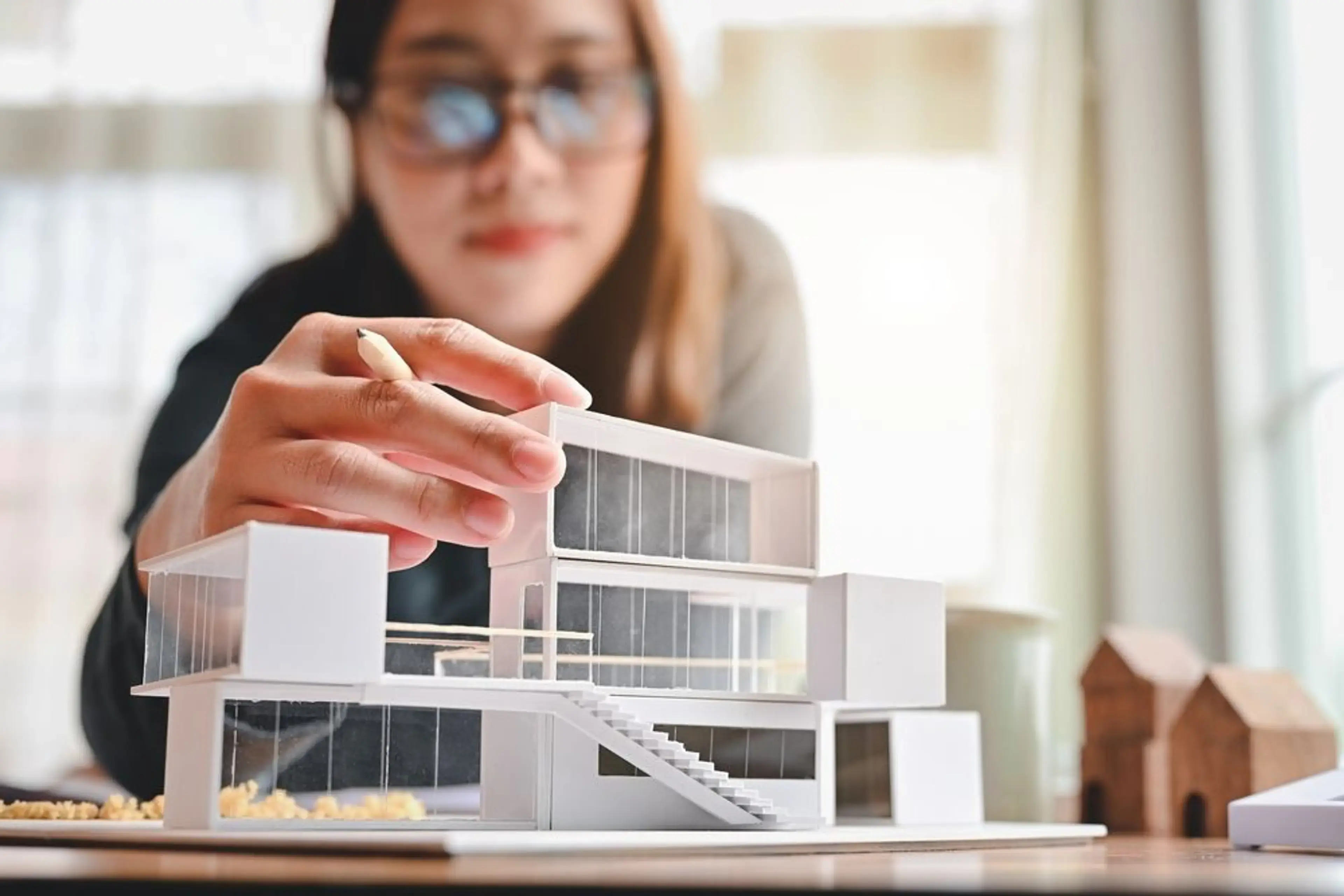Comprehending the Diverse Career Paths Available for Aspiring Architect
As an aspiring Architect, you have a globe of job courses waiting on you. Each path uses unique challenges and possibilities to apply your imagination and technological knowledge. Whether you're attracted to traditional style or the nuances of sustainable design, there's a specific niche that straightens with your passions. Understanding these diverse alternatives can form your expert journey, yet which instructions will you pick to explore initially?
Standard Style: Creating Frameworks and structures
Traditional design concentrates on creating structures and frameworks that mix performance with visual appeal. As you discover this field, you'll appreciate the complex balance between type and purpose. You'll learn to attract ideas from historical styles, incorporating elements like balance, products, and craftsmanship. Your layouts can mirror social heritage, showcasing regional traditions while satisfying modern-day needs.
You'll establish skills in preparing, model-making, and website evaluation, allowing you to picture and connect your ideas efficiently. Engaging with customers, you'll need to recognize their vision and translate it into possible designs.
In addition, building codes and sustainability techniques are crucial in your work, guaranteeing your structures are eco friendly and safe. As you expand in your profession, you'll find chances in residential, commercial, or even reconstruction jobs, each offering one-of-a-kind obstacles. Welcoming conventional design leads the method for a fulfilling occupation that admires the past while shaping the future.
Urban Preparation: Forming Communities and Public Spaces
As an aspiring Architect, you can play a necessary role as a metropolitan planner, changing how communities connect and operate. By using neighborhood engagement strategies, you'll guarantee that homeowners have a voice fit their environment. Plus, incorporating lasting design concepts will certainly assist develop areas that not only satisfy today's demands but additionally secure the future.
Role of Urban Planners
While many might assume of engineers as the single visionaries behind buildings, metropolitan planners play a necessary function fit the broader landscape of neighborhoods and public spaces. They examine land usage, zoning regulations, and area needs to develop lasting settings that boost lifestyle. By collaborating with numerous stakeholders, you'll aid create parks, transportation systems, and household locations that advertise social communication and accessibility. Urban planners likewise focus on environmental considerations, guaranteeing that advancements integrate environment-friendly areas and assistance biodiversity. Your expertise in spatial style and neighborhood dynamics permits you to picture future growth while preserving cultural heritage. In this crucial duty, you'll directly influence just how individuals experience their surroundings, making every project an opportunity for favorable change.
Area Involvement Techniques
Reliable area engagement methods are essential for metropolitan planners to ensure that the voices of citizens are heard and valued in the preparation process. To cultivate meaningful discussion, you must focus on open discussion forums and workshops where neighborhood members can reveal their concepts and concerns. Usage surveys and social media to reach a wider audience, guaranteeing varied point of views are consisted of. Teaming up with regional organizations can enhance depend on and help with deeper connections. It is necessary to provide clear info about suggested tasks and decision-making procedures, allowing homeowners to feel educated and equipped. By actively integrating and paying attention responses, you'll produce spaces that show the community's demands, ultimately leading to even more successful and lasting urban environments. Accept openness and constant discussion for lasting influence.
Sustainable Design Concepts
When developing city rooms, integrating lasting layout principles is critical for producing environments that thrive both environmentally and socially. You ought to begin by concentrating on energy performance, making use of materials that lower waste and promote recycling. Think about incorporating eco-friendly spaces, like yards and parks, to boost biodiversity and improve air high quality. Advertising walkability and public transportation can decrease dependence on automobiles, promoting a much healthier area.
Creating with water preservation in mind is also vital-- consider rainfall yards and permeable surface areas to take care of stormwater. Involving community participants throughout the preparation process assurances that the areas you produce meet their requirements and encourage social communication. By accepting these principles, you'll add to vivid, sustainable urban landscapes that profit everybody.

Landscape Architecture: Producing Lasting Outdoor Atmospheres
As you discover landscape style, you'll uncover necessary style principles that produce beautiful and practical outside areas. Lasting practices play a crucial duty in guaranteeing these settings flourish while decreasing environmental impact. Plus, you'll discover a selection of career possibilities that allow you to make a genuine distinction in exactly how individuals connect with nature.
Design Concepts in Landscape
Recognizing layout principles in landscape architecture is crucial for producing sustainable outside atmospheres that balance with nature. You'll require to contemplate components like percentage, scale, and balance to guarantee your styles feel natural and inviting. Incorporating indigenous plants not just boosts biodiversity however additionally reduces water usage, making your landscape resilient. Think of the flow of area and exactly how people connect with it; pathways and seating areas need to welcome exploration and leisure. Furthermore, take note of seasonal adjustments, designing with products that enhance the environments year-round (Architect). By prioritizing sustainability and looks, you can develop outside areas that improve the neighborhood and promote well-being. Welcoming these concepts will certainly establish a strong foundation for your occupation in landscape design.
Lasting Practices Review
Lasting methods a knockout post in landscape architecture not just focus on appearances but additionally focus on eco-friendly health and resource conservation. You can develop areas that advertise soil wellness, such as exercising and making use of natural products permaculture principles. Eventually, these methods guarantee your layouts benefit both people and the atmosphere for years to come.
Career Opportunities Exploration
With a solid structure in sustainable methods, landscape architecture supplies a variety of profession paths that permit you to make a significant impact on the setting. Urban coordinators commonly collaborate with landscape architects to create eco-friendly spaces in urban settings, boosting city livability. If you're enthusiastic concerning education and learning, consider coming to be a landscape design teacher, motivating future generations.
Sustainable Layout: Concentrating On Eco-Friendly Practices
As you discover your job in design, accepting environmentally friendly practices can establish you apart in a competitive field. Sustainable style focuses on developing structures that decrease environmental influence while enhancing passenger health. By incorporating eco-friendly materials, energy-efficient systems, and sustainable building methods, you'll contribute to a greener future.
Beginning by getting knowledge of eco-friendly qualifications like LEED or BREEAM, which can strengthen your qualifications. Think about how all-natural light, ventilation, and thermal performance can maximize design. Collaborate with engineers and ecological professionals to innovate options that reduce waste and save resources.
Do not forget the significance of area participation-- engaging regional stakeholders can motivate layouts that balance with the atmosphere. As clients progressively focus on sustainability, your know-how in eco-friendly techniques will certainly not just draw in projects but additionally meet your passion for accountable design. Embrace this critical facet of the occupation, and view your profession grow.
Historic Preservation: Safeguarding and Restoring Cultural Heritage
While you begin on your architectural journey, consider the necessary function of historic preservation in maintaining our social heritage. This area focuses on the defense and remediation of significant buildings, sites, and frameworks that tell the tales of our past. By taking part in historic conservation, you'll help protect the architectural legacy that forms area identity.
As a historic conservation Architect, you'll analyze historical importance and analyze the condition of structures. You'll function important link carefully with chroniclers and preservationists to guarantee authentic repair methods are used. This occupation path permits you to mix creativity with research, allowing you to make remedies that value initial products and workmanship.
Your work not only contributes to sustainability by reusing existing structures however likewise fosters a sense of pride within areas. Accepting this path will certainly aid you become a guardian of background, preserving the tales and aesthetics that enhance our lives.
Inside Style: Enhancing Indoor Spaces
Historic preservation and indoor style both share a dedication to improving the built environment, however they concentrate on various aspects. While historical preservation emphasizes preserving a framework's historic and cultural worth, interior style absolutely nos in on optimizing indoor rooms for capability and looks.
As an aspiring Architect, you'll find that indoor architecture permits you to mix creativity with technological skills. You'll create areas that not only look good but also promote convenience and effectiveness. This field involves understanding just how light, color, and products communicate within a space, affecting state of mind and use.
You'll work on various projects, from household homes to business offices, making sure that each atmosphere satisfies the needs of its residents. By prioritizing customer experience, you can transform interiors right into motivating and functional rooms, making a significant effect on exactly how people interact with their environments. Accept the chance to enhance interior atmospheres and form the method people function and live.
Industrial Style: Merging Performance With Looks
Commercial style plays an essential role in creating items that perfectly blend aesthetics with performance, making sure that what you utilize day-to-day is not just visually appealing yet additionally sensible. As an ambitious Architect, you might engage on your own in this field, focusing on developing every little thing from furnishings to customer electronics. Your work entails recognizing individual demands, products, and manufacturing processes, enabling you to create innovative services that boost everyday experiences.
In industrial design, you'll often collaborate with manufacturers, marketing experts, and designers, making sure that your designs are not only beautiful but additionally feasible. You'll learn to stabilize type and feature, focusing on functionality without sacrificing design. By refining your skills in mapping out, 3D modeling, and prototyping, you'll be well-appointed to bring your ideas to life. This profession path provides a vibrant atmosphere where creativity fulfills functionality, making it a fulfilling selection for designers curious about Resources forming the items of tomorrow.
Regularly Asked Concerns
What Educational Qualifications Do I Required to Become an Architect?
To become a designer, you'll need a professional degree in design, usually a Bachelor's or Master's. Additionally, you'll have to complete a teaching fellowship and pass the Architect Registration Assessment to practice legally.
Are There Accreditation Demands for Different Building Profession Paths?
Yes, there're qualification demands for numerous building courses. Architect. You'll need to pass exams, full teaching fellowships, and sometimes go after specialized training, relying on your selected focus, like landscape style, metropolitan style, or historical preservation
What Software Application Skills Are Crucial for Architects Today?

Just How Can I Gain Practical Experience While Examining Architecture?
You can acquire sensible experience by interning at architectural firms, taking part in design competitors, offering for neighborhood projects, or working together with classmates on real-world jobs. These chances improve your abilities and construct beneficial links in the market.
What Job Opportunities Exist Outside Typical Architecture Firms?
You can discover numerous task opportunities outside standard architecture companies, like city planning, interior decoration, landscape design, construction management, actual estate growth, or also roles in sustainability consulting. Each deals one-of-a-kind challenges and benefits.
Whether you're attracted to conventional design or the nuances of lasting design, there's a niche that lines up with your passions.When making metropolitan spaces, integrating lasting design principles is essential for producing atmospheres that prosper both environmentally and socially.As you discover landscape architecture, you'll find necessary design concepts that develop useful and beautiful exterior spaces.Comprehending design principles in landscape style is necessary for developing lasting exterior atmospheres that integrate with nature.In commercial layout, you'll frequently work together with engineers, manufacturers, and marketing professionals, making certain that your layouts are not only gorgeous but additionally practical.